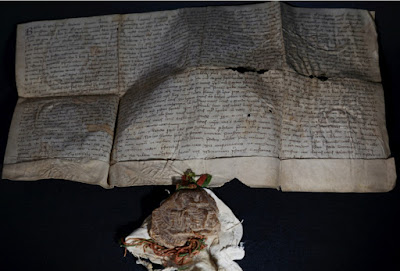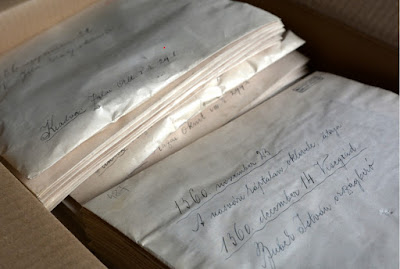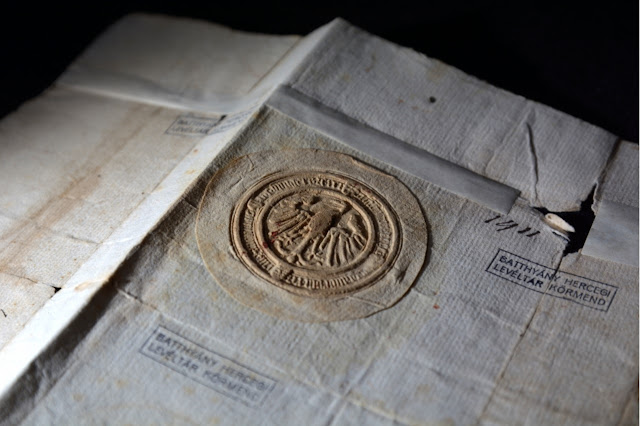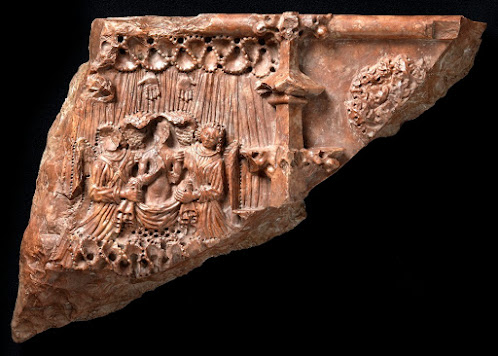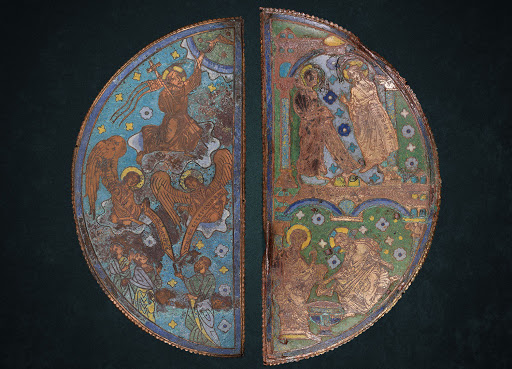From the 11th to the 31st of March, an exhibition presents the medieval manuscripts of the Cathedral Libray of Esztergom. Titled "For They Watch for Your Souls..." - Codices in the Cathedral Library of Esztergom, the exhibition is on view in the newly restored exhibition rooms of the Bibliotheca.
The
Cathedral Library of Esztergom preserves forty-five medieval manuscript books, which are displayed together for the first time now, in March 2022. The exhibition honors the archbishops and canons of Esztergom as well as the donators and previous owners of the manuscripts, by whose generosity the library became the largest collection of codices among ecclesiastical libraries of Hungary. The written culture of medieval Hungary is represented by fourteen codices copied in various Hungarian scriptoria. Two old Hungarian manuscripts - early linguistic records - stand out from among the Latin books on account of their special value. The Nagyszombat Codex was prepared in the monastery of the Poor Clares in Óbuda. It contains meditations and guides for penance and confession. The Jordánszky Codex is the most complete medieval Bible translation into Hungarian, and is named after is former owner, Elek Jordánszky, a canon of Esztergom. Out of the codices preserved in the Cathedral Library of Esztergom, without a doubt three were used in Esztergom before 1543. These are the 12th-century Expositiones super Cantica Canticorum, László Szalkai's (1475-1526) schoolbook written by the future archbishop between 1489 and 1490, and the codex of vicar-general Albert Pesthy. The manuscript collection owned by the Archbishop and the Chapter of Esztergom was further enriched during the sojourn of the Archbishopric in Nagyszombat (Trnava, Slovakia). Liturgical books and astronomical works were acquired, as well as a manuscript containing letters by Saint Gregory the Great, copied in the Benedictine Abbey of Moissac in the 11th century. In 1555, Nicholaus Olah )1493-1568), archbishop of Esztergom, donated the two-volume Bakócs Gradual to the church of Esztergom The luxurious Wladislav Gradual originates from Prague from the first decade of the 16th century. It holds Bohemian musical material, richly illuminated with historiated initials as well as border decorations with floral motifs, animal figures, and scenes from everyday life.
After the library moved back to Esztergom in 1853, János Scitovszky (1785-1866), archbishop of Esztergom, József Dankó and Nándor Knauz, canons of Esztergom each bequeathed four codices to the collection. Among these, there was a 12th-century cathedral schoolbook containing a commentary of the Song of Songs among other texts, and several manuscripts of Bohemian origin.
Most codices in the library originated and were used in Central Europe, in Bohemia, Vienna, and Southern Germany. Nevertheless, some of the manuscripts came from the English, Italian, and French territories. The decoration of Peter Lombard's commentary on the Psalms is a high-quality product of English miniature painting. The exhibited manuscripts present a wide range of medieval ecclesiastical literature encompassing books on liturgy, theology, church law, astronomy, lexicography, as well as sermon collections, prayer books, and schoolbooks.
The exhibition coincides with the publication of a catalog describing with great erudition the medieval manuscripts preserved in the Esztergom book collections (The Codices of the Cathedral Library of Esztergom, the Archiepiscopal Simor Library, and the Esztergom City Library). The book was edited by Edit Madas and written by Kinga Körmendy, Judit Lauf, Edit Madas, and Gábor Sarbak. Kinga Körmendy's thorough introduction presents the history of the collections and the detailed descriptions are accompanied by various indices, appendices, a bibliography, and color plates. The book is the most recent volume of the
Fragmenta et codices in bibliothecis Hungariae series. The book can be ordered here:
bibliotheca@bibliotheca.hu. A German-language version of the catalog is forthcoming.
(Text and photos by the Cathedral Library of Esztergom)







